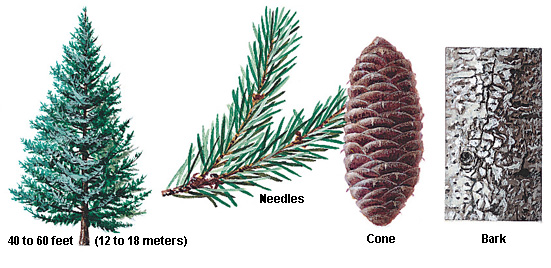Balsam fir is the name given to a number of evergreen trees in the pine family. The name usually refers to a medium-sized tree that is common in the northeastern and north-central parts of the United States and much of Canada. Pure stands of balsam fir grow in some areas, but the tree more often grows with white, black, and red spruces.

Mature balsam fir trees stand 40 to 60 feet (12 to 18 meters) tall. Balsam fir needles grow in two rows on hairy twigs. The needles are about 1 inch (2.5 centimeters) long with two silvery bands on their undersides.
The balsam fir has many uses. It ranks as the most popular Christmas tree in North America because of its cone shape and pleasant fragrance, and because it holds its needles for a long time after cutting. The fragrant needles of balsam fir can be dried and used as stuffing in sweet-smelling pillows. Resin found in blisters on the smooth gray bark is sold as Canada balsam, a useful transparent cement. Mature balsam firs are sometimes made into paper pulp. The trees are rarely used for lumber because the wood is light, weak, and soft. Other firs sometimes called balsam include the Fraser fir and the white fir. See also Fir ; Conifer .
